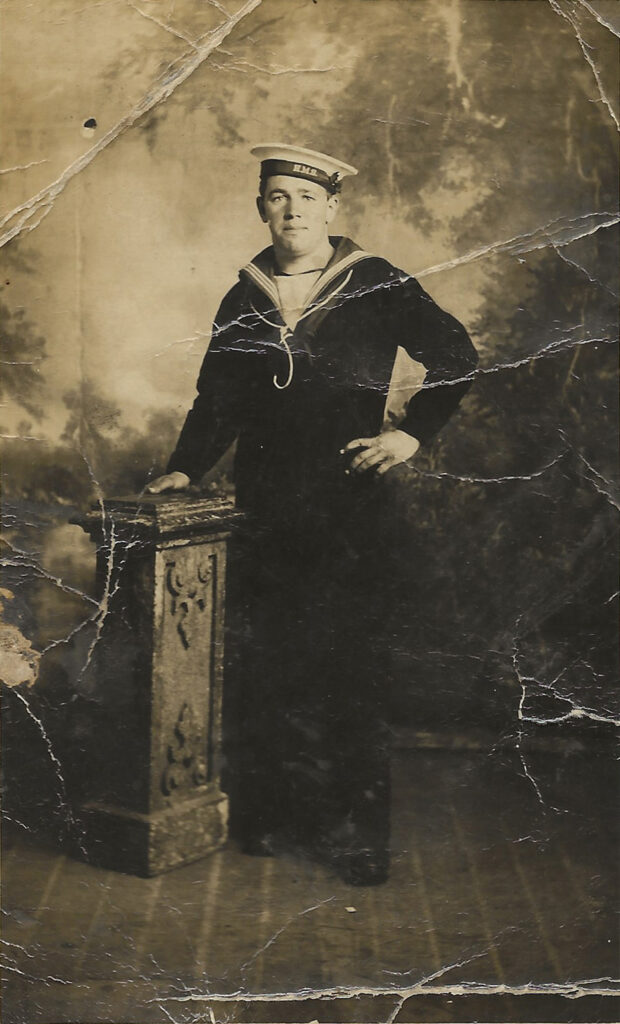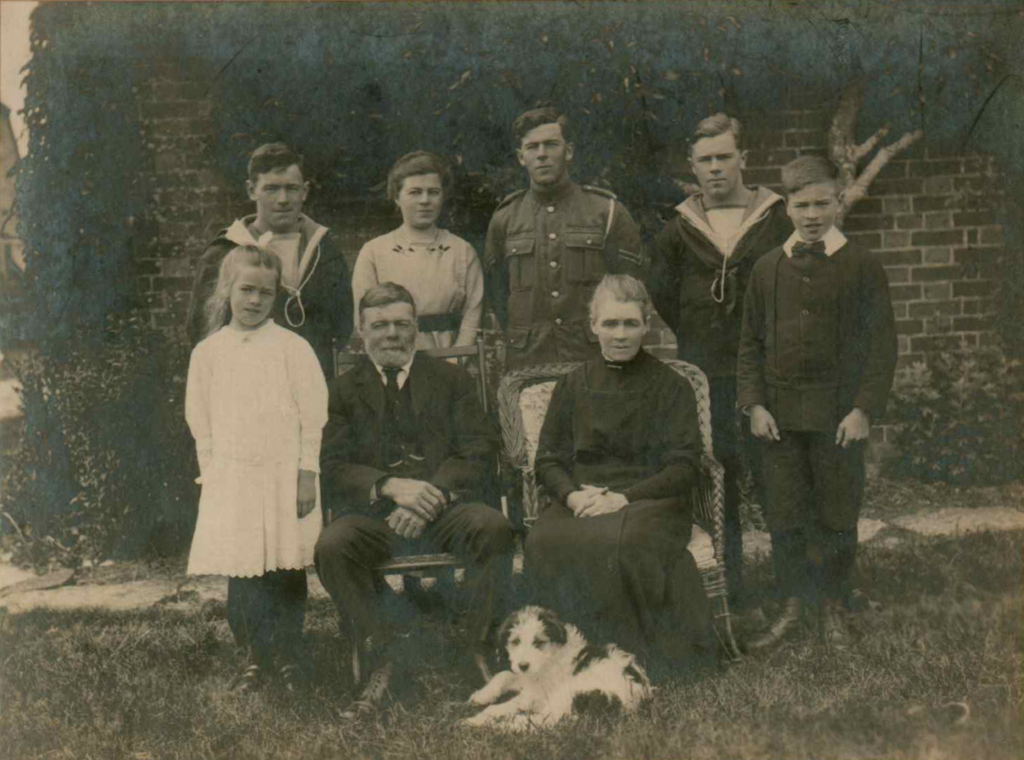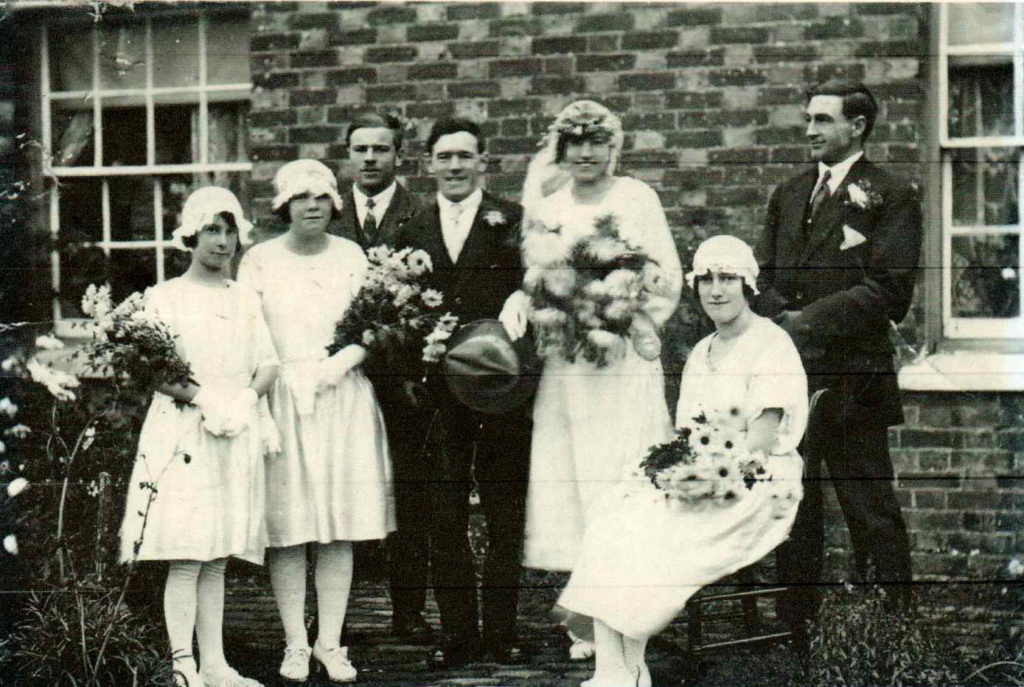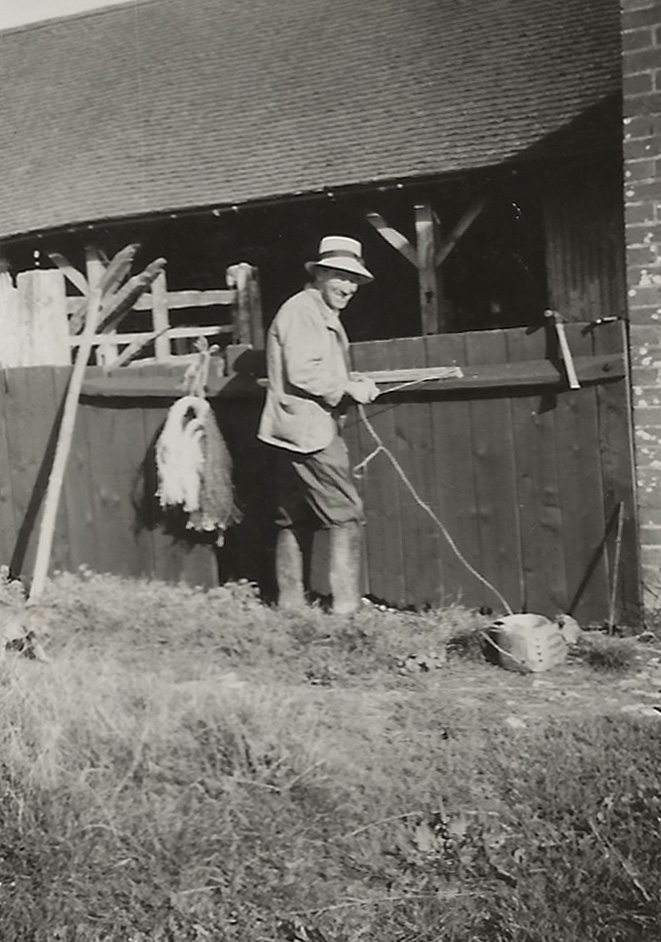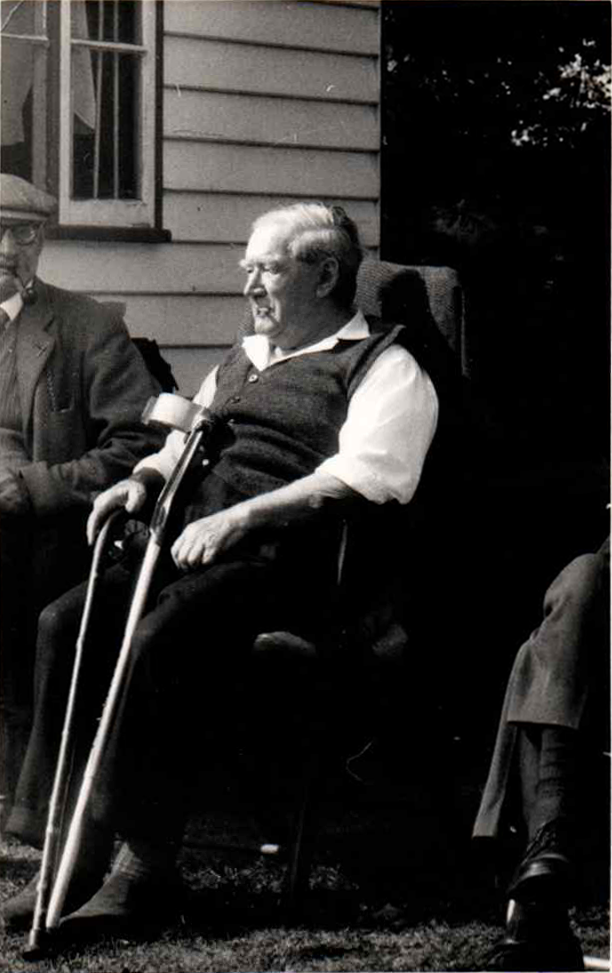A report on the autumn show of the Bethersden Cottage Gardeners’ Show, Kentish Express 23rd November 1907, contained the following:
In the evening a diverting entertainment was presented, most diverting contributions being submitted by Miss Creaton, Miss Inge, Miss Skinner and Miss Parker, the Vicar (the Rev. D.H. Creaton), and Messrs. W. Parker, James Batt, Martin and the men’s part-song class. In addition instrumental selections were played by the Bethersden brass band, under the leadership of Mr. Chas. Heathfield.
One week later, on 30th November, additional information was provided:
THE SHOW.– We are asked to state that Mr. James Link, who was such a successful exhibitor at the vegetable show last week, is father to the gardener of Lord Hothfield. The opening ceremony of the above was performed by Mrs. Elmslie, who was accompanied by Colonel Elmslie, C.B., of Forge Dene. We are also asked to draw special attention to the musical contributions in the evening of the Batt Bros., who rendered the anthem, “Awake” and “Dame Durden” in excellent style.
35 years later, ‘Dame Durden’ was one of two songs which Francis Collinson noted from the Batt brothers on 25th June 1942, the other being ‘Come Come My Pretty Maid’ (which he also took down from their cousin Tom Batt). And both songs formed part of the repertoire of the Millen Family (related by marriage to the Batts) when they recorded the CD In Yonder Green Oak in 2000.
George Frampton, in his article The Millen Family of Bethersden, Kent, provides further information on the Batt brothers’ activities:
The Smarden Local History scrapbooks compiled by the local Women’s Institute, which are on microfilm at Ashford Public Library, list two more items in their repertoire: The Mistletoe Bough; and the local version of Nahum Tate’s hymn While Shepherds Watched, to the tune known elsewhere as ‘Lyngham’ or ‘Nativity’. In both cases, only the tune of each is given, on the assumption that no local variant on the words existed for those generally known. There are also numerous references present to their singing at various village functions. The Batt brothers’ singing was evident in the 1920s, when the New Year Old Folks’ Tea was revived. The ‘Old Friends’ Tea’ as it was renamed had been abandoned with the First World War, but was started up again by the sisters Doris Julia and Kate Batt of Romden Farm, Smarden (a photograph of whom appeared in English Dance and Song in 1969)1 – who were distant relatives of the brothers. After the repast, there was entertainment supplied from the guests themselves – including Bill Crampton (Dillon’s gardener in 1942) playing his accordion and singing his songs, also from professional performers from Maidstone and elsewhere. The Batts were often joined for this by their brothers-in-law Victor and Basil Millen from Wagstaff Farm at nearby Biddenden. The local paper reported that in 1928, the Batt and Millen brothers ‘rendered old glees unaccompanied.’ In 1931, they were referred to as the ‘Messrs. Batt Glee Party.’ Both Batts and Millens were involved in 1932, but after that, no mention was made of this coupling. In 1937, ‘the four well-known Batt brothers (rendered) their ever popular glee-singing, and their favourite song Just Kitty.’
It seems curious that Francis Collinson only noted down two songs from the Batt brothers – he must have been aware of their larger repertoire. Dan, Harry, Eb and Mark were featured in the fifth edition of Country Magazine broadcast in July 1942, wherein “… a fifty years old song was sung …” – without specifically stating who did the singing. One can only deduce that he was looking specifically for one type of song – i.e. the ‘folk’ song, rather than anything book-learnt, even though the item concerned may have beenhanded down orally from generation to generation, from friend to neighbour. Or perhaps it was that in the 1940s, when Collinson was active, glees were still perceived as modern songs or art songs from literary sources and therefore not worthy of transcription.
In 1935, the Batt brothers decided to do a recording of their singing. They rehearsed at Jim’s farm at Sevington, standing in a circle trying to get the harmonies right, then it was off to London and the studio. Only a few discs seem to have been cut, and these copies of the record have gone to ground – even among the surviving members of the family, although it is recalled that the tracks concerned were Dame Durden and Stephen Foster’s Uncle Ned. The record itself did not find universal praise. As it was, when each of the Batts died, with no direct descendant keen to continue the family singing tradition, the inheritance of their songs remained solely with the Millens.2
George Frampton has identified the singing Batt Brothers as Dan, Jim, Harry, Ebenezer and occasionally Mark. A report on the 1942 Country Magazine radio programme, Kent Messenger, 3rd July, included photos of the brothers who had taken part in the broadcast: Dan, Harry, Ebenezer and Mark Batt. These were the sons of James and Jane Batt of Hodgham Farm, Bethersden.
James Batt was baptised on 29th April 1810, at St Michael’s, Smarden. He married Harriet Lindridge at St Michael’s, Chart Sutton, on 12th October 1831, and the 1841 census found them living at Further Quarter, High Halden. James’ occupation was agricultural labourer, and they had four children. In 1851, still at Further Quarter, they had another three sons. Harriet died in January 1855, and the 1861 census shows James as a widower, living with his two youngest sons at Hodgham, Bethersden. His occupation is no longer agricultural labourer – he is now listed as “Farmer of 12 acres of land”.
In 1861 the household included a 23 year old house keeper, Jane Lengley. She and James were married the following year, and it was her sons who would go on to sing together as the Batt Brothers. At the time of the 1871 census the family were still at Hodgham. James was now shown as “Farmer (14 acres)”. In 1881 James was still “Farmer using 14 acres” but the family was shown as living at Odiam House, Bethersden. The household included two children from James’ first marriage, plus seven sons and one daughter from his second.
James died in 1886, at the age of 77. Jane continue to live at Hodgham until her death in 1914.
Daniel Batt, 1869-1956
Dan, born in the third quarter of 1869, was the third son to be born to James and Jane. He remained at the family farm at Hodgham, working as an agricultural labourer at the time of the 1891 census, when his mother Jane was listed as “Farmer”, and shown as “Helping on farm” in 1901, when his older brother George was the farmer. By 1911, however Dan was farming Hodgham. He married Pluckley-born Annie Pearson in 1916, and by 1921 they had moved to Langley Farm, Bethersden, where they remained for the rest of their lives. Dan’s obituary, Kentish Express, 19th October 1956 described him thus:
A FARMER FOR 30 years at Langley Farm, and previously at Vine Hall, Bethersden. Mr. Dan Batt, 87, of Langley, died in Hothfield Hospital. His wife died over five years ago and there are no children. Mr. Batt a keen all-round sportsman and an excellent shot was one of seven brothers. of whom only Mr. H. Batt survives. Formerly some of the brothers, known as The Batt Glee Singers, recorded for the BBC.
George Frampton records that at various times Dan Batt played trombone in both the Bethersden and Biddenden brass bands.
James Batt, 1871-1941
Jim Batt was born in the final quarter of 1871. Like his older brother Dan, he was working at Hodgham as an agricultural labourer in 1891. He married Alice Link in 1896 and in 1901 they were living on Ashford Road, Bethersden; Jim was working as a butcher.
In 1911 his occupation was given as “Butcher and farmer”, and the family were residing at an address in The Street Bethersden. There were five daughters and two sons, and the household also included a male assistant and female general domestic servant. Another daughter had been born by 1921, when the Batts were to be found at Court Lodge, Sevington. Jim was now shown simply as “Farmer”. He employed his son Norman as a shepherd, while daughters Gladys and Daisy were “Assisting Father”, and son Ashley was “Assisting Father In Farm Work”.
Jim remained at Court Lodge until his death on 27th April 1941. An obituary was printed in the Kentish Express, 2nd May 1941:
DEATH OF WELL KNOWN FARMER
MR. J. BATT. SEVINGTON
Kent’s farming districts and market towns will regret to learn of the death of Mr. James Batt, Court Lodge, Sevington, on April 27. Mr. Batt, who was 69, and who had borne a long illness patiently, had resided at Sevington for over twenty years, and he was recognised as a skilled farmer in all branches of agriculture, including hop-growing, fruit cultivation, sheep-rearing and formerly, dairy-farming.
He was born at Odiam Farm, Bethersden, in which locality he lived for about forty years, during which time he became well-known. as a farmer and a butcher. In 1916 he removed to Headcorn, but after a year he returned to Bethersden, and in 1919 he went to Sevington. He was a keen cricketer and an excellent shot in his younger days. He had the honour to win a silver cup (1936) presented by the organizers of the Ashford Cattle Show for the best grass farm in Kent. Until ill-health caused him to resign, he served on the local War Agricultural Committee for the disposition of plough-lands.
He is survived by his wife Mrs. A. Batt, and his daughters and sons Mrs. H. Lorden (Kenardington), Mr. N. Batt (Bethersden), Mrs. S. Burbridge (Headcorn), Mr. A. Batt (Sevington), Mrs. C. Hunt (Sevington), Mrs. A. Chisman (Poole), and Mrs. H. Crump (Bilsington). The second daughter died in 1934. There are nine grandchildren.
Like Dan, Jim played euphonium in local bands, and could also play the fiddle.
Henry Batt, 1875-1964
Harry and Ebenezer were twins, born in the third quarter of 1875. In 1891 both were working for their half-brother Alfred (born 1850) as agricultural labourers, at Ternden Farm, Green Lane, Bethersden. In 1901 Harry was working for his older brother, Charles Batt, who farmed at Barrell Farm, Bethersden. He married Eva Minnie Brown in 1909, and two years later they were living at Sunny Side Farm, Bethersden. Harry was described as “Farmer grazier”. In 1921 they had a daughter, and were still at Sunny Side Farm. Harry’s occupation was given as “Farmer – Employer”, Eva’s as “Farmer – Own Account”. Still at Sunnyside Farm, School Road, Bethersden in September 1939, Harry was by now a widow. His occupation was given as “Dairy & Poultry Farmer”.
Harry was the last of the brothers to survive, dying at the age of 88 in the second quarter of 1964.
Ebenezer Batt, 1875-1954
The 1901 census shows Ebenezer “Helping on farm” for George Batt, the oldest of his brothers, who had taken on the running of the family farm at Hodgham. Later that year he married Elizabeth Pearson, with whom he had three children.
By the time of the 1911 census Ebenezer was farming at Wissenden Lodge, Bethersden. Elizabeth died in 1919, and the following year Ebenezer remarried. His new wife was Dorothy E. Bee, originally from Southampton; they were married in the Pancras Registration District, London. In 1921 they were living at Wissenden Lodge, in 1939 at Kench Hill Farm, Tenterden. Ebenezer retired in 1944 and moved to Sellindge. He died in 1954, at the age of 78. An obituary in the Kentish Express, 26 February 1954 read:
Was Weald Farmer And Hop Grower
Member of well-known Smarden family, Mr. Ebenezer Batt, dairy farmer and hop grower of Wissenden, Coopers-lane, Sellindge, died on Friday, aged 78.
He worked on his father’s farm, when 11. and later farmed Wissenden Farm, Smarden, until 1934 when he went to Kench Hill Farm, Tenterden. In 1944 he went to live in retirement at Sellindge, after farming for nearly 60 years. He was a great sportsman and a fine shot, gaining many awards for clay pigeon shooting.
His twin brother, Mr. Harry Batt. still lives in Smarden.
His funeral took place at the Tilden Chapel, Smarden, a Strict Baptist chapel dating back to 1726, of whose congregation all of the Batts had been members.
Mark Batt, 1879-1950
Mark was born in the first quarter of 1879. In 1901, like Dan and Eb he was “Helping on farm” at Hodgham, and ten years later was still there as a farm worker. He married Esther A Jarvis in 1920. The 1921 census and 1939 Register both show him farming at Buckman Green, Smarden. He died in the final quarter of 1950, aged 71.
Songs
